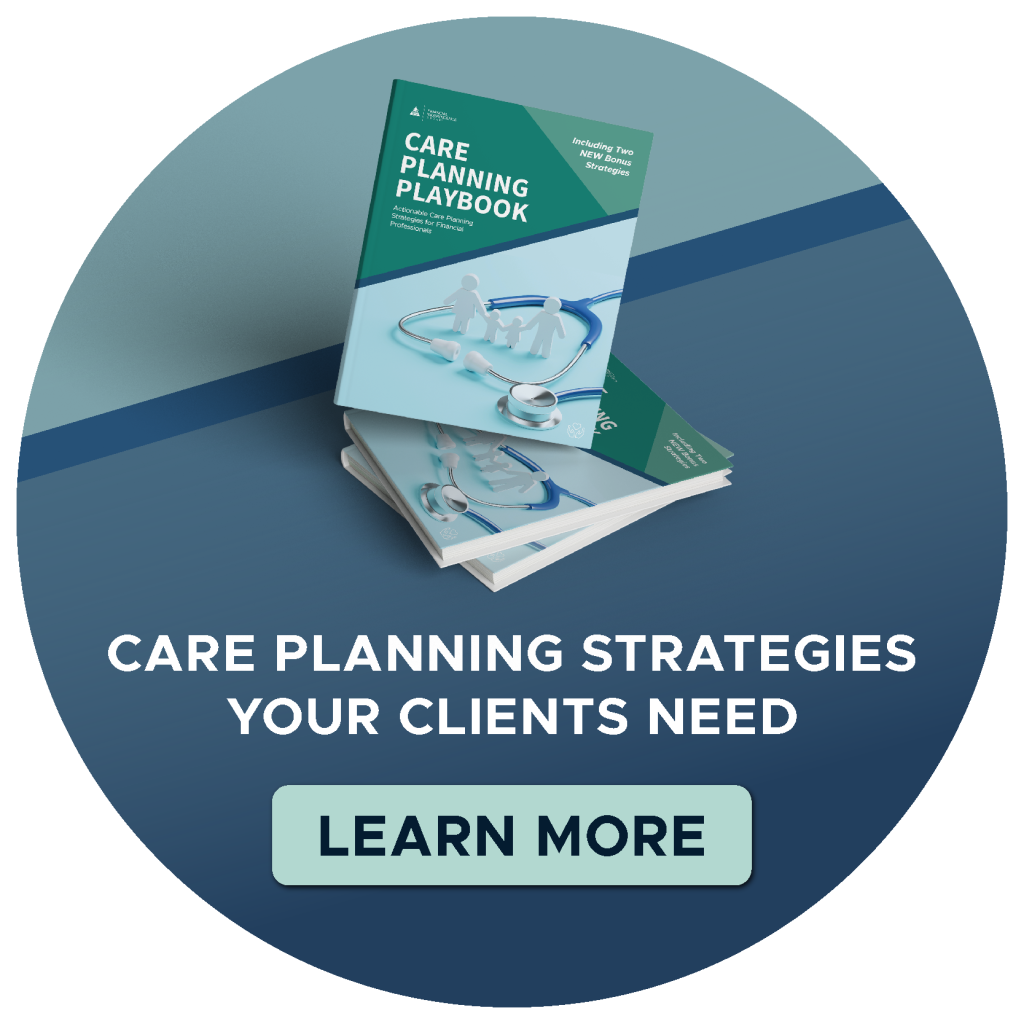In the five years since COVID-19 swept quickly through nursing homes, Americans’ desire to age in the comfort, privacy, and independence of their own homes has only grown stronger.
In a recent survey, 82% preferred to reside at home as they age. However, a third have never considered how they’ll pay for that care.
Even more striking, 83% said they haven’t taken any steps to plan for the possibility of needing care at all.
That disconnect—clear preferences without a real plan—leaves families vulnerable. Clients risk losing the ability to choose how and where they receive care later in life, unless they begin discussing it now.
For financial professionals, bridging this gap between what clients want and what they’ve prepared for requires two opposite—but powerful—forces working together:
- Family
- Artificial intelligence
Here’s how inviting both into your next care conversation can make a significant difference.
The Hidden Cost of Avoiding the Conversation
Why do so many families avoid planning for care?
According to recent surveys, the majority of Americans expect a spouse, partner, or family member to provide care if they ever need it. That assumption often explains why so many families avoid formal care planning—if clients believe loved ones will handle their physical and financial needs, what’s left to plan?
What’s the impact of caregiving on families?
These expectations are rarely discussed, and the reality can be overwhelming. Providing care often requires hundreds of unpaid hours each year, significant out-of-pocket costs, and emotional strain on family members. The caregiver burden can be especially challenging for the “sandwich generation,” who are already juggling careers, raising children, and saving for retirement.
Related: Turn Stagnant Assets into Tax-Advantaged Care Planning Solutions
Why Family Belongs in Every Care Conversation
Inviting the next generation into the care planning conversations has a number of benefits, including:
- Aligning expectations early: It ensures that everyone understands the plan and is on the same page about how care will be received before a crisis occurs
- Clearing up assumptions: Many parents believe their children want them to preserve assets for inheritance, when in reality, most children would rather see their parents use funds to secure quality care and maintain independence
- Encouraging open communication: Discussing care preferences as a family helps “clear the air” and makes clients more confident about planning ahead
- Building multi-generational trust and client retention: These conversations can strengthen the bond with future clients
Related: How to Overcome Top Client Objections in Financial Planning
The Role of AI: Bringing Data and Clarity to Emotional Decisions
Family brings the emotional side to care planning—the why. Artificial intelligence brings the what and the how.
Advisors are turning to Waterlily for easy implementation of AI into their conversations. Waterlily’s AI-powered platform is fueled by more than 500 million data points to help create personalized, data-driven plans.
It reveals:
- When care may begin and how long it could last, based on predictive modeling
- The projected cost of care, tailored to a client’s age, location, and care preferences
- The estimated number of hours family members might need to step in as providers
- Steps for building a plan using the client’s current assets, insurance, and income streams
What makes Waterlily revolutionary is that it’s built for the advisor but has a client-facing, user-friendly interface. It helps families visualize their options and make informed decisions, all under the guidance of you, their advisor.
How to Initiate Care Conversations with Family and AI
Starting a conversation about long-term care can feel uncomfortable for both you and your clients. But the right timing, tools, and approach can make it easier and meaningful.
1. Choose the right moment.
- Use Long-Term Care Awareness Month (November) as a natural opportunity to reach out to existing clients
- Position it as education, not sales—an annual reminder to check in on goals and family readiness
- Tie it to a recent life event (retirement, a health change, or a new grandchild) to make it personal and relevant
2. Bring the family to the table.
- Encourage clients to include adult children or key decision-makers early in the planning process
- Suggest hosting a family planning meeting where everyone can share their hopes, concerns, and assumptions
- Advisors can guide these discussions to ensure alignment around expectations, roles, and funding sources
3. Use AI to make it real.
- Introduce Waterlily, the AI-powered forecasting tool, as a neutral and visual starting point
- Show clients and their families:
- The likelihood and timing of a care event
- The estimated costs of different care settings
- The potential hours family members may need to provide care
- Seeing this data often helps clients move from “we’ll figure it out later” to “we need a plan now”
The Future of Care Planning Is Humans and AI Working Together
Care planning is a prime example of how AI and human interaction work in tandem to create the most effective planning experiences for clients and advisors.
When families see real numbers backed by AI and guided by an advisor they trust, the conversation shifts from fear and avoidance to understanding and action.



